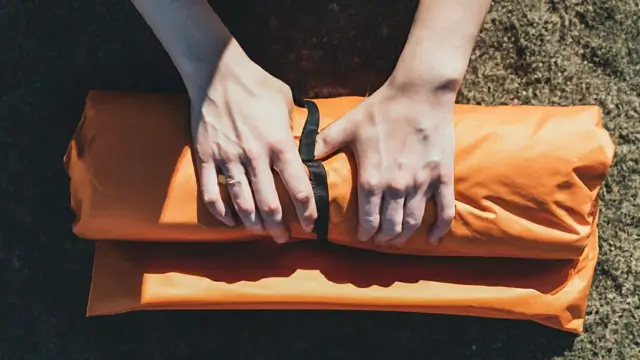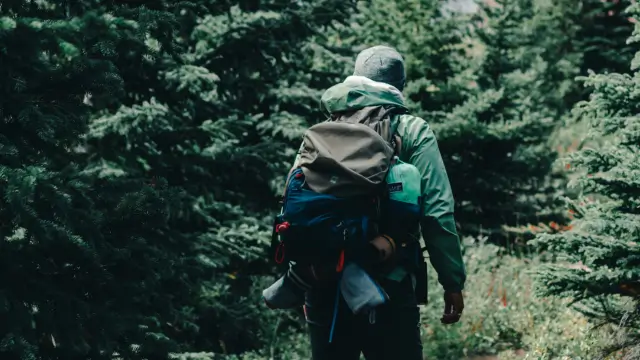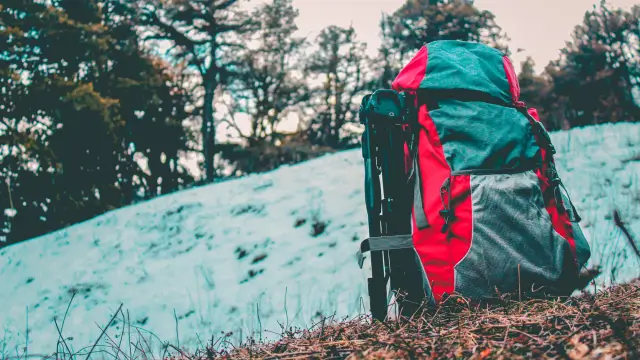How to Carry a Tent on a Backpacking Trip

You are wondering about “how to carry a tent on a backpack“. You’re in the right place.
I’m Jaden Burley, a camping enthusiast with years of experience. I know the struggle of packing a tent in a backpack, so I’m here to share my insights and help you carry your tent like a pro.
Whether you’re new to backpacking, or if you’re looking for tips on how to carry your tent more efficiently, then this article is for you. Let’s dive in and make sure you’re ready to hit the trails with confidence!
Key Takeaways:
- Optimal Weight Distribution Inside
- Strategic Attachment Outside
- Advanced Techniques for Efficiency
- Perfecting Tent Rolling
- Consideration for Lightweight Tents
packing a tent inside a backpack: Optimal Weight Distribution

1. Strategic Placement Against the Back Panel:
Optimal weight distribution begins with placing the tent against the back panel of your backpack. This central position minimizes discomfort and strain during extended hikes.
2. Mastering the Rolling Technique:
Roll the tent tightly and secure it in its stuff sack. However, take it a step further by rolling it in a way that aligns with the size of folded tent poles, ensuring a compact and organized setup.
3. Alternative Packing for Smaller Packs:
For smaller backpacks, consider a nuanced approach. Pack poles separately and loosely stuff the fabric at the bottom. Pay special attention to protecting fragile parts to ensure the tent’s integrity.
Tip: If you have a smaller backpack, you may want to consider packing your tent poles separately. This will free up space inside your pack for other gear.
How to pack a tent out of a backpack: Strategic Attachment

1. Strap it Right:
If carrying outside, strategically strap the tent to the bottom for optimal weight distribution. Alternatively, adapt based on your backpack’s design – use the top if bottom straps are lacking. Secure with drawstrings for added stability.
2. Mix and Match for Versatility:
Adaptability is key. Consider factors like protection inside the backpack versus easy access or drying outside. Flexibility allows you to tailor your approach to the dynamic conditions of your backpacking scenario.
Action item: Experiment with different ways to attach your tent to your backpack to find what works best for you. Some people prefer to attach the tent to the bottom of their pack, while others prefer to attach it to the top.
Advanced Technique to Pack a Larger Tent in Your Pack

1. Vertical Packing for Space Optimization:
Take your packing skills up a notch. Pack your tent poles vertically into a tall side pocket. This is particularly beneficial for larger tents, preventing them from taking up precious room inside your pack. Here’s how I do it:
First, identify a suitable tall side pocket on your backpack. This pocket will be the designated space for your tent poles.
Next, make sure your tent poles are secured. Consider using a waterproof bag to protect them from the elements.
Slide the poles vertically into the side pocket, ensuring a snug fit. This method not only optimizes space but also provides easy access to your tent during the day.
By incorporating this vertical packing approach, you’re efficiently organizing your gear and ensuring accessibility on the trail.
Challenge: Try packing your tent poles vertically into a tall side pocket on your backpack. This is a great way to save space and keep your tent poles organized.
2. Waterproofing for Rainy Adventures:
When gearing up for rainy adventures, keeping your tent dry is crucial. Here’s how I tackle waterproofing:
First, invest in a reliable waterproof stuff sack for your tent. This ensures an additional layer of protection against rain.
Before packing, make sure the tent is dry. If it’s wet, take the time to dry it in the sun. Wet tents are not only heavy but can also lead to a damp interior.
When rolling up your tent, pay extra attention to securing the rainfly. Ensure it’s tightly fastened to prevent any moisture from seeping in during rain showers.
If you anticipate rain during your hike, consider attaching the waterproof stuff sack to the bottom of your backpack to shield it from rain splashes.
By prioritizing waterproofing, you’re guaranteeing a comfortable and dry shelter, even in unpredictable weather conditions.
3. Redundant Tethering for Security:
When opting to carry your tent outside your backpack, ensuring its security is paramount. Here’s my approach:
Focus on redundant tethering. I personally secure the tent using multiple attachment points to minimize the risk of accidental falls. This careful and redundant tethering significantly reduces the chances of damage or loss during your backpacking expedition.
By prioritizing security and employing redundant tethering, you can confidently navigate challenging terrains without worrying about your tent’s safety.
Rolling Up A Tent: Perfecting the Process
1. Pre-Packing Preparation:
Before packing, ensure the tent is dry. If condensation is present, turn the tent inside out and shake it. Let it bask in the sun to reduce weight and eliminate moisture.
2. Neat Rolling Techniques:
Achieve a compact result by folding the tent edges in thirds or quarters. Create a long strip matching the folded tent poles’ size. Roll it tightly for a neat and efficient package.
3. Stakes Inclusion:
Don’t overlook the stakes. Collect and include them in the stuff sack before securely closing it. A well-prepared tent includes all its essential components.
Consider A Lightweight Tent: Investment in Comfort:
Understand the value of a lightweight tent. A comfortable backpacking experience starts with the right gear. Explore reasonably priced options in the 1.5 – 2.5 pound range for a perfect balance of weight and durability.
Common Questions about Carrying a Tent in a Backpack
Can you fit a tent in a backpack?
Yes, you can fit a tent in a backpack, but it depends on the size of the tent and the backpack.
A typical 1-person backpacking tent should fit inside a 50+ liter backpack, while a larger 2- or 3-person tent may require a 60+ liter pack.
You can also attach a tent to the outside of your backpack, but this may make it more difficult to balance and carry.
How do I keep my backpack from getting wet in the rain?
To keep your backpack from getting wet in the rain, use a rain cover or plastic bag to cover your backpack, and pack your most important items in waterproof bags or dry bags.
How heavy should a tent be for backpacking?
A backpacking tent should weigh no more than 3 pounds per person. This is a good rule of thumb to strike a balance between weight, durability, and livability.
How to Carry a Tent on a Backpack: Final Thoughts
There you have it – a comprehensive guide on how to carry a tent on a backpack. With these tips, you’ll be well-prepared for your next backpacking adventure.
Remember, the key is finding a setup that works for you, so don’t hesitate to make adjustments based on your preferences.
Happy trails, fellow backpackers! May your adventures be filled with breathtaking views, cozy campsites, and the joy of the great outdoors.
Related Topics:






